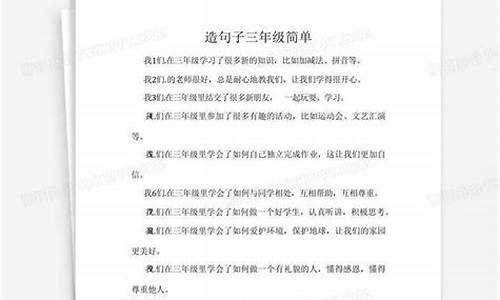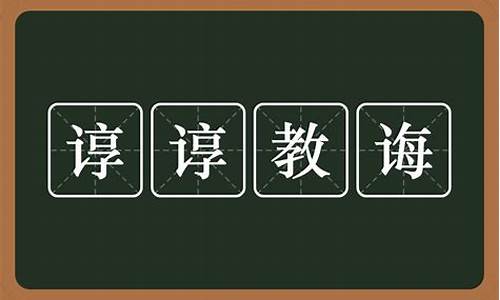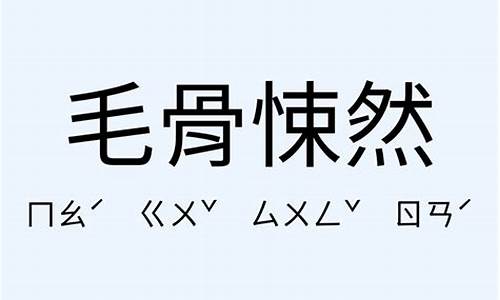您现在的位置是: 首页 > 成语典故 成语典故
lengthwise-lengthwise反义词
tamoadmin 2024-10-27 人已围观
简介名词后缀 1.-ant,-ent表示人或构件 applicant(申请人),assistant(助手),occupant(居 住者,占有人),component(部件,成分),defendant(被 告)dependant(依赖他人者) 2.-ee在动词后面,表示动作的接受者 employee(被雇佣者),abandonee(受领被抛弃财物者), addressee(收件人),appointee(

名词后缀
1.-ant,-ent表示人或构件
applicant(申请人),assistant(助手),occupant(居
住者,占有人),component(部件,成分),defendant(被
告)dependant(依赖他人者)
2.-ee在动词后面,表示动作的接受者
employee(被雇佣者),abandonee(受领被抛弃财物者),
addressee(收件人),appointee(被任命者),refugee
(难民)
3.-eer表示“从事于……的人”
engineer(工程师),profiteer(投机者),pioneer(先
锋),volunteer(志愿者)
4.-er加在动词后指人或机械;加在地名后面指该地区的人
dispenser(药剂师),dyer(染色工),sampler(品尝家)
,absorber(吸收者),amplifier(扩大器),Londoner
(伦敦人),New Yorler(纽约人)
5.-or指人或物
accelerator(加速器),accumulator(蓄电池、存储器)
,actor(演员),collector (收集者)
6.-graph用于写或记录的机械
ammograph(风速什),chorograph(位置测定器),
seimograph(地震仪)。
7.-ian,-an,-ese指大陆、国家的人
African(非洲人),American(美国人),Asian(亚洲人)
,Japanese(日本人),Chinese(中国人)
8.-ician指熟悉……人
electrician(电工),logician(逻辑学家),
mathematician(数学者)
9.-ist指相信某种理论或制度或经常做某项工作的人
botanist(植物学家),chemist(化学家),communist
(***员),typist(打字员),violinist(小提琴家)
10.-miter,-meter仪器
tachmiter(视距仪,准距仪),tromometer(微震仪)。
11.-ism主义
socailism(社会主义),capitalism(资本主义)
12.-ard指人,带轻蔑意味
drunkard(醉鬼),coward(胆小鬼)
13.-ette小,(商业上)表示假的
cigarette(香烟),kitchenette(小厨房),essayette
(短论文),storyette(短篇小说),flannette(棉法兰
绒),leatherette(人造革)。
14.-y,-ie加在称呼上表示亲昵。
Deary(亲爱的),daddy(爸爸),granny(奶奶、姥姥)
,shorty(短衣服)
15.-let小(加在名词后面)
booklet(小册子),streamlet(小溪)
16.-ling小(带有轻蔑的意思)
lordling(愧儡王),professorling(小教授),
weakling(窝囊废),hireling(市侩)
17.-age加在动词后面,表示行为的结果
stoppage(阻塞),storage(储藏),marriage(婚姻)
,stortage(短缺)
18.-al加在动词后面
approval(建议),denial(否认),refusal(拒绝),
rehearsal(彩排)
19.-ion,-sion,-tion加在动词后面
selection(选择),correction(修改),intention(打
算),recognition(认识),description(描写),
education(教育),solution(解决),decision(决定)
20.-cy构成名词
accuracy(正确性),diplomacy(外交),constancy
(经常),bankruptcy(破产)
21.-dom表示国家,职业,状况
freedom(自由),martyrdom(殉难),kingdom(王国)
,wisdom(智慧)
22.-ful加在容器后面,表示某容器的容量
handful(一把的),mouthful(一口之量的),glassful
(一杯之量的)
23.-hood为名词后辍,表示关系或抽象意义
brotherhood(兄弟),fatherhood(你辈),neighborhood
(邻居),likelihood(可能性)
24.-it, is表示“炎症”
bronchitis(支气管炎),arthritis(关节炎),
appendicitis(阑尾炎)
25.-ity加在形容词后面,表示抽象意义
ability(能力),reality(现实)
26.-ment加在动词后面
advertisement(广告),(政府),
punishment(惩罚),settlement(解决),statement
(声明),pavement(人行道)
27.-ness是最活跃的后缀之一,可以加在许多形容词后,构成抽
象名词
friendliness(友好),kindness(和蔼),
progressiveness(进步)
28.-gram构成“画、图、字”等含义
diagram(图表,图解),program(计划),telegram(电
文,电报)
29.-ship加在名词后面,表示状态、抽象概念
friendship(友谊),relationship(关系),
membership(成员),citizenship(居民权)
30.-try,-ery加在名词、形容词、动词后面,表示集体,地点
archery(箭术),fishery(渔场),brewery(酿酒厂)
,forestry(林业)
31.-th是名词后辍
birth(出生),death(亡),depth(深度),growth
(生长),strength(力量),truth(真理)
32.-ty加在形容词后面,表示特性或情况
bounty(慷慨,好施),cruelty(残酷),loyalty(忠
诚),plenty(多),safety(安全)
33.-ure加在动词后面,表示行为及其结果
disclosure(说出,透露),expenditure(花费),
mixture(混合),exposure(展现,暴露),picture(图画)
34.-ics主要表示一门学问
acoustics(声学),aerobatics(技巧飞行),
economics(经济学),electronics(电子学),
mechanics(机械学)
35.-logy表示一门学科
archaeology(考古学),biology(生物学),etymology
(词源学),geology(地理学)
36.-nomy
astronomy(天文学),economy(经济),taxonomy(分类学)
形容词后缀
1.-able,-ible加在动词后面
acceptable(可接受的),avoidable(可避免的)
understandable(可理解的),readable(可读的),
countable(可数的),possible(可能的)
2.-al加在地名上
African(非洲的),Australian(澳大利亚的),Canadian(加拿
大的)
4.-ern表示方向
eastern(东方的),northern(北方的),southern(南
方的),western(西方的)
5.-ese 表示人
Japanese(日本人),Chinese(中国人),Vietnamese
(越南人)
6.-ic加在名词后面
economic(经济的),specific(特殊的),scientific
(科学的)
7.-ical加在名词后面
economical(经济的),historical(历史的),
political(政治的)
8.-ish
(1). 加在国家名称后面,表示该国的或者该国的人。
Swedish(瑞典的),Irish(爱尔兰的),Danish(丹麦的)
(2). 加在普通名词后面,表示“具有……性质”,或者含有轻
蔑的意思。
Childish(幼稚的),womanish(女人气的),foolish
(愚昧的),selfish(自私的)。
(3). 加在表示颜色的形容词后面,表示“略带……颜色的”。
Greenish(微绿的),yessowish(微**的)。
9.-ar加在外词后面,构成形容词
annular(环状的),familiar(熟悉的),linear(线的)
,nuclear(原子的),angular(角的),circular(圆的)
10.-ed加在名词后面,构成形容词
aged(年长的),cultured(有文化的),skilled(有技术
的),talented(有才能的),wretched(可怜的)
11.-fold加在数词或名词后,构成形容词
twofold(三倍的),threefold(三倍的),tenfold(十
倍的),thousandfold(千倍的),manifold(许多倍的)
12.-id构成形容词
acid(酸的),acrid(刻薄的)
13.-ing加在动词后面,构成形容词
appetizing(开胃的),encouraging(鼓舞人心的),
exciting(令人激动的),interesting(有趣的)。
14.-less加在名词后面,构成与之反义的形容词
armless(无手臂的),boundless(无限的),countless
(不可数的),faithless(背信弃义的)
15.-proof加在名词之后,表示“防…的”形容词
airproof(防气的),soundproof(隔音的),bombproof
(防炸弹的),burglarproof(防盗的),waterproof(防水的)
16.-some加在形容词后,构成形容词
fulsome(过度的,讨厌的),gladsome(愉快的),
tiresome(疲惫的),lonesome(孤独的)
17.-ious,-uous,-eous构成形容词
various(多种多样的),continuous(继续的),
courageous(有勇气的)
18.-en加在名词后面,构成动词
lengthen(加长),frighten(恐吓)
动词后缀
1.-ate,-ute
accumulate(集中),formulate(形成),calculate(计
算),attribute(归功)
2.-en加在名词、形容词后面
blacken(使……黑),broaden(扩宽),deepen(加深)
,fasten(加快),harden(加固),thicken(加厚)
3.-ify加在名词、形容词后面
acidify, alkalify(碱化),beautify(美化),
electrify(使充电),certify(肯定),modify(修正)
4.-ize,-ise,-yxe,-yse
Americanize(美国化),analyze(分析),democratize
(民主化),modernize(现代化),popularize(通俗化,推广)
5.-er
batter(猛打),flatter(吹捧),chatter(喋喋不休地
说),whisper(耳语)
副词后缀
1.-ly加在形容词后面
immediately(立即),quickly(快的),namely(即,就是说)
2.-ways,-wise,-ward加在名词或代词后面
endways(末端向上地),endwise(末端向下地),
lengthways(纵长地),lengthwise(纵长地),
backwards(向后退地),upwards(向上地)
好心人 麻烦帮我找个英语翻译汉语的机械方面的文章(车床类)英和汉 是一篇文章哟!大概2000字 左右!
安全方式
-wise
后缀
1.表示"方向","位置","方式"(如:lengthwise)
2.表示"像...的样子"(如:likewise, clockwise)
3.表示"关于..."(如:budgetwise)
各种乐器的英文名
The Lathe and Its Construction车床及其结构
A lathe is a machine tool used primarily for producing surfaces of revolution and flat edges.
车床是主要用于生成旋转表面和平整边缘的机床。
Based on their purpose, construction, number of tools that can simultaneously be mounted, and degree of automation, lathes-or, more accurately, lathe-type machine tools can be classified as follows:
根据它们的使用目的、结构、能同时被安装刀具的数量和自动化的程度,车床—或更确切地说是车床类的机床,可以被分成以下几类:
(1)Engine lathes
(2)Toolroom lathes
(3)Turret lathes
(4)Vertical turning and boring mills
(5)Automatic lathes
(6)Special-purpose lathes
(1)普通车床
(2)万能车床
(3)转塔车床
(4)立式车床
(5)自动车床
(6)特殊车床
In spite of that diversity of lathe-type machine tools, they all have common features with respect to construction and principle of operation. These features can best be illustrated by considering the commonly used representative type, the engine lathe. Following is a description of each of the main elements of an engine lathe, which is shown in Fig.11.1.
虽然车床类的机床多种多样,但它们在结构和操作原理上具有共同特性。这些特性可以通过普通车床这一最常用的代表性类型来最好地说明。下面是关于图11.1所示普通车床的主要部分的描述。
Lathe bed. The lathe bed is the main frame, involving a horizontal beam on two vertical supports. It is usually made of grey or nodular cast iron to damp vibrations and is made by casting.
车床床身:车床床身是包含了在两个垂直支柱上水平横梁的主骨架。为减振它一般由灰铸铁或球墨铸铁铸造而成。
It has guideways to allow the carriage to slide easily lengthwise. The height of the lathe bed should be appropriate to enable the technician to do his or her job easily and comfortably.
它上面有能让大拖板轻易纵向滑动的导轨。车床床身的高度应适当以让技师容易而舒适地工作。
Headstock. The headstock is fixed at the left hand side of the lathe bed and includes the spindle whose axis is parallel to the guideways (the slide surface of the bed). The spindle is driven through the gearbox, which is housed within the headstock.
主轴箱:主轴箱固定在车床床身的左侧,它包括轴线平行于导轨的主轴。主轴通过装在主轴箱内的齿轮箱驱动。
The function of the gearbox is to provide a number of different spindle speeds (usually 6 up to 18 speeds). Some modern lathes have headstocks with infinitely variable spindle speeds, which employ frictional ,electrical ,or hydraulic drives.
齿轮箱的功能是给主轴提供若干不同的速度(通常是6到18速)。有些现代车床具有采用摩擦、电力或液压驱动的无级调速主轴箱。
The spindle is always hollow, i. e., it has a through hole extending lengthwise. Bar stocks can be fed through that hole if continuous production is adopted.
主轴往往是中空的,即纵向有一通孔。如果采取连续生产,棒料能通过此孔进给。
Also, that hole has a tapered surface to allow mounting a plain lathe center. The outer surface of the spindle is threaded to allow mounting of a chuck, a face plate, or the like.
同时,此孔为锥形表面可以安装普通车床顶尖。主轴外表面是螺纹可以安装卡盘、花盘或类似的装置。
Tailstock. The tailstock assembly consists basically of three parts, its lower base, an intermediate part, and the quill. The lower base is a casting that can slide on the lathe bed along the guideways, and it has a clamping device to enable locking the entire tailstock at any desired location, depending upon the length of the workpiece.
尾架:尾架总成基本包括三部分,底座、尾架体和套筒轴。底座是能在车床床身上沿导轨滑动的铸件,它有一定位装置能让整个尾架根据工件长度锁定在任何需要位置。
The intermediate part is a casting that can be moved transversely to enable alignment of the axis of the tailstock with that of the headstock. The third part, the quill, is a hardened steel tube, which can be moved longitudinally in and out of the intermediate part as required.
尾架体为一能横向运动的铸件,它可以调整尾架轴线与主轴箱轴线成一直线。第三部分,套筒轴是一淬硬钢管,它能根据需要在尾架体中纵向进出移动。
This is achieved through the use of a handwheel and a screw, around which a nut fixed to the quill is engaged. The hole in the open side of the quill is tapered to enable mounting of lathe centers or other tools like twist drills or boring bars. The quill can be locked at any point along its travel path by means of a clamping device.
这通过使用手轮和螺杆来达到,与螺杆啮合的是一固接在套筒轴上的螺母。套筒轴开口端的孔是锥形的,能安装车床顶尖或诸如麻花钻和镗杆之类的工具。套筒轴通过定位装置能沿着它的移动路径被锁定在任何点。
The carriage. The main function of the carriage is mounting of the cutting tools and generating longitudinal and/or cross feeds. It is actually an H-shaped block that slides on the lathe bed between the headstock and tailstock while being guided by the V-shaped guideways of the bed.
大拖板:大拖板的主要功能是安装刀具和产生纵向和/或横向进给。它实际上是一由车床床身V形导轨引导的、能在车床床身主轴箱和尾架之间滑动的H形滑块。
The carriage can be moved either manually or mechanically by means of the apron and either the feed rod or the lead screw.
大拖板能手动或者通过溜板箱和光杆(进给杆)或丝杆(引导螺杆)机动。
When cutting screw threads, power is provided to the gearbox of the apron by the lead screw. In all other turning operations, it is the feed rod that drives the carriage. The lead screw goes through a pair of half nuts, which are fixed to the rear of the apron.
在切削螺旋时,动力通过丝杆提供给溜板箱上的齿轮箱。在其余车削作业中,都由光杆驱动大拖板。丝杆穿过一对固定在溜板箱后部的剖分螺母。
When actuating a certain lever, the half nuts are clamped together and engage with the rotating lead screw as a single nut, which is fed, together with the carriage, along the bed. When the lever is disengaged, the half nuts are released and the carriage stops.
当开动特定操作杆时,剖分螺母夹在一起作为单个螺母与旋转的丝杆啮合,并带动拖板沿着床身提供进给。当操作杆脱离时,剖分螺母释放同时大拖板停止运动。
On the other hand, when the feed rod is used, it supplies power to the apron through a worm gear. The latter is keyed to the feed rod and travels with the apron along the feed rod, which has a keyway extending to cover its whole length.
另一方面,当使用光杆时则通过蜗轮给溜板箱提供动力。 蜗轮用键连接在光杆上,并与溜板箱一起沿光杆运动,光杆全长范围开有键槽。
A modern lathe usually has a quick-change gearbox located under the headstock and driven from the spindle through a train of gears. It is connected to both the feed rod and the lead screw and enables selecting a variety of feeds easily and rapidly by simply shifting the appropriate levers.
现代车床一般在主轴箱下装备快速变换齿轮箱,通过一系列齿轮由主轴驱动。它与光杆和丝杆连接,能容易并快速地通过简单转换适当的操作杆选择各种进给。
The quick-change gearbox is employed in plain turning, facing and thread cutting operations. Since that gearbox is linked to the spindle, the distance that the apron (and the cuttingtool) travels for each revolution of the spindle can be controlled and is referred to as the feed.
快速变换齿轮箱可用于普通车削、端面切削和螺旋切削作业中。由于这种齿轮箱与主轴相连,主轴每转一圈溜板箱(和切削刀具)运动的距离能被控制,这距离就可以被认为是进给。
后缀的副词
1、Viola
中提琴,擦奏弦鸣乐器。提琴族中的中音乐器,外形及结构与小提琴基本相同,只是形体略大。五度定弦为c、g、d1、a1,琴身长度一般为42.5厘米。
中提琴的音色比小提琴更厚实、温暖而丰满,指法和运弓与小提琴基本相同。中提琴从比中央C低八度音程的C开始,每根弦间隔五度音程,依次为C、G、D及A音,比小提琴低五度,而比大提琴高了八度。
2、Cello
大提琴,为西洋乐器,是管弦乐队中必不可少的次中音或低音弦乐器,属提琴族乐器里的下中音乐器。大提琴音色浑厚丰满,具有开朗的性格,擅长演奏抒情的旋律,表达深沉而复杂的感情,也与低音提琴共同担负和声的低音声部,有"音乐贵妇"之称。
3、Electric guitar
电吉他是现代科学技术的产物,从外型到音响都与传统的吉他有着明显的差别。琴体使用新硬木制成,配有音量、音高调节器(琴钮)以及颤音结构(摇杆)等装置。配合效果器的使用,电吉他有很强的表现力,在现代音乐中有很重要的位置。现在多用于歌曲伴奏。
4、Bass
贝斯(Bass) 是乐队中一般必不可少的乐器之一,它在乐队中主要担任低音声部,有时也作即兴独奏。传统爵士乐一般都采用原声贝司(即低音提琴)来体现它的原始风味。而在现代爵士乐(特别是融合爵士)中经常运用电贝斯或电子合成器中的合成贝斯音。
5、Harp
竖琴(英:Harp,意:Arpa,德:Harfe,波斯:),是一种大型弹弦乐器。竖琴是世界上最古老的拨弦乐器之一,起源于古波斯(伊朗),据埃及古图记载,此种乐器出现于公元前三、四千年。当时的形状犹如一个有弦之弓。
国家变国籍的英语后缀有哪几种变化规律
1、-ly后缀
相当大一部分副词是在形容词的基础上加ly后缀而来。也有小部分副词是在名词或序数词的基础上加ly词尾构成。
a) 形容词加ly词尾,如:
happily 高兴地;relatively 相对的;carefully 仔细地
b) 名词、序数词加ly词尾,如:
partly 部分地;purposely故意地;weekly每周;daily每日地;firstly 第一;fourthly 第四
2、-wise 后缀:表方向、方式
clockwise 顺时针地,右转地;counterclockwise反时针,左转地;crosswise 横过地,对角横穿地;likewise同样地;otherwise否则,要不然
3、-ward(s) 后缀:表示方向
afterward(s) 其后,后来;forward(s) 向前,向着将来;backwards(s) 向后;inward(s) 向内,在内;upward (s) 向上;onward(s) 向前,前往;outward(s) 向外,在外;homeward(s) 回家;eastward(s) 向东;northward(s) 向北;westward (s) 向西;southward(s) 向南
4、-erly 后缀: 表示向、来自
easterly 向东方,来自东方;northerly向北方,来自北方;southerly 向南方,来自南方; westerly向西方,来自西方
扩展资料:
动词后缀:
1、-ize,ise,表示"做成,变成,……化“modernize,mechanize,democratize,organize
2、-en,表示"使成为,引起,使有” quicken,weaken,soften,harden
3、-ify,表示"使……化,使成”beautify,purify,intensify,signify,simplify
4、-ish,表示"使,令” finish,abolish,diminish,establish
5、-ate,表示“成为……,处理,作用” separate,operate,indicate
百度百科-英语后缀
sectionwise是什么意思?
国家变国籍的英语后缀的变化规律根据来源不同,分为三种,分别是,-an和-ese来自拉丁语,-ish来自日尔曼语。
1、-anword-forming element meaning "pertaining to," from Latin -anus, in some cases via French -ain, -en.构词成分的意思是“关于”,来自拉丁语-肛门,在某些情况下通过法语-ain,-en。
2、-eseword-forming element, from Old French -eis (Modern French -ois, -ais), from Vulgar Latin, from Latin -ensem, -ensis "belonging to" or "originating in."
构词成分,源于古法语-eis(现代法语-ois,-ais),源于粗俗拉丁语,源于拉丁语-ensem,-ensis“属于”或“起源于”
3、-ishadjectival suffix, from Old English -isc, common Germanic (cognates: Old Norse -iskr, German -isch, Gothic -isks), cognate with Greek diminutive suffix -iskos.?
Colloquially attached to hours to denote approximation, 1916.
形容词后缀,来自古英语-isc,普通日耳曼语(同源词:古挪威语-iskr,德语-isch,哥特式-isks),与希腊语小后缀-iskos同源。
以小时为单位表示近似,1916。
扩展资料:
副词后缀单词举例:
1、-ly加在形容词后面
immediately(立即),quickly(快的),namely(即,就是说)
2、-ways,-wise,-ward加在名词或代词后面
endways(末端向上地),endwise(末端向下地),
lengthways(纵长地),lengthwise(纵长地),
backwards(向后退地),upwards(向上地)
参考资料:
-wise
后缀 suf.
1.
表示"方向","位置","方式"(如:lengthwise)
2.
表示"像...的样子"(如:likewise, clockwise)
3.
表示"关于..."(如:budgetwise)
下一篇:万恶之源-万恶之源英文









